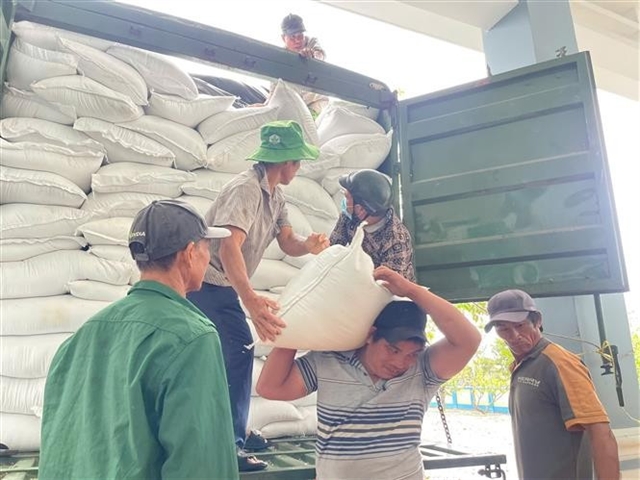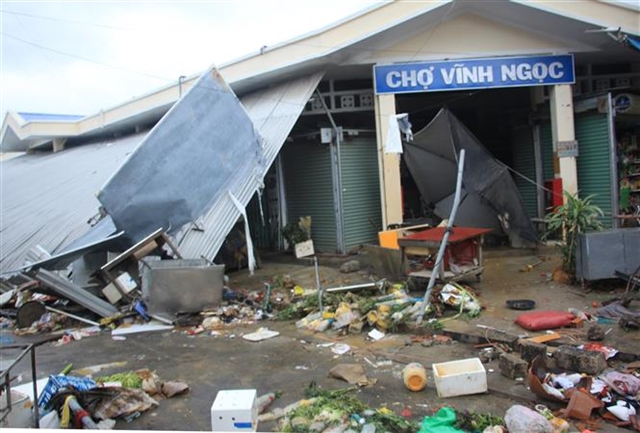 Sunday/Weekend
Sunday/Weekend
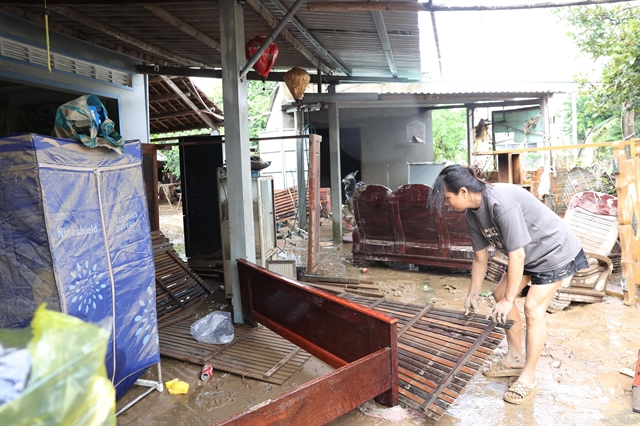
 |
| The excavation pit at the Mán Bạc archaeological site, Đồng Thái Commune, Ninh Bình Province. Photo caption. VNA/VNS Photo Thùy Dung |
Thùy Dung
The Mán Bạc archaeological site in Đồng Thái Commune in the northern province of Ninh Bình dates back nearly 4,000 years and is broadly representative of the late Neolithic culture in Việt Nam, particularly during the transitional period between the Neolithic and the Bronze Age.
After numerous ancient burial sites, tools, pottery and traces of habitation were unearthed at the site, Mán Bạc has provided valuable insights into the area's prehistoric population.
Developing a sustainable conservation strategy that integrates research and promotes tourism is essential to share the site's value with the community.
Traces of ancient Việt Nam
Mount Mán Bạc has a crescent shape that surrounds a closed valley, known as Thung Vụng. Next to this valley is a flat, elevated area at the foot of the mountain, where archaeologists discovered traces of prehistoric habitation in March 1998.
Since then, the Mán Bạc archaeological site has become a key location for learning about prehistoric Việt Nam.
 |
| Excavations have revealed many significant findings. VNA/VNS Photo Thùy Dung |
According to Prof Lâm Thị Mỹ Dung, PhD, from the University of Social Sciences and Humanities at Việt Nam National University, Hà Nội, the Mán Bạc archaeological site has garnered the attention of both domestic and international scientists due to its immense value.
Multiple excavations have been conducted since 1999, and the results indicate that the site contains a vast amount of data and artefacts, including stone tools, pottery, and animal and plant remains. Of particular interest are burial sites from the late Phùng Nguyên culture and early Đồng Đậu culture dating back nearly 4,000 years.
“These findings provide important historical scientific evidence for understanding the economic, cultural and social aspects of the Mán Bạc inhabitants, as well as ancient Vietnamese people in general, during the pre-Đông Sơn period,” Dung said.
 |
| Notable artefacts excavated in 2025 at the site. VNA/VNS Photo Thùy Dung |
Research also indicates that Mán Bạc is a habitation and burial site with a high concentration of remains, including 105 burial sites containing 107 bodies, along with a distinctive array of artefacts.
This serves as vivid evidence of a prehistoric community that lived there for an extended period, exhibiting advanced social organisation and skills in using natural resources. It reflects the transitional phase from the late Neolithic stone tool culture to the early use of metal in the early Bronze Age in Việt Nam.
In addition to its archaeological significance in tracing the emergence of ancient Vietnamese people, Mán Bạc is notable for the presence of earthenware later known as Bồ Bát pottery.
This shows that the ancient residents of Ninh Bình established a vibrant ceramic culture at Mán Bạc, which became an important part of prehistoric ceramics in northern Việt Nam.
“The pottery found at Mán Bạc holds significance not only for daily life, but also for the spiritual life of the local people, reflecting their understanding of the natural world at that time,” Dung said.
Due to its valuable data and precious artefacts, the Mán Bạc archaeological site was designated as a provincial heritage site by the Ninh Bình cultural authority in 2017.
Awakening ancient heritage
To showcase the outstanding heritage value of the Mán Bạc site and provide scientific foundations for future conservation, Ninh Bình Province has carried out research on an area of 196 square metres.
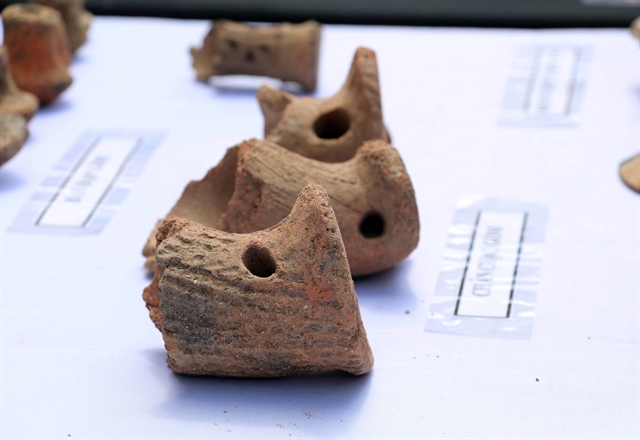 |
| Artefacts unearthed at Mán Bạc shed light on ancient Vietnamese culture. VNA/VNS Photo Thùy Dung |
The project aims to investigate the nature of habitation and the relationship between the residential area and the burial site.
It also seeks to preserve the cultural layers using a multi-dimensional stratigraphic recording method, thereby creating a database for interdisciplinary research.
According to Hoàng Văn Diệp, PhD, from the University of Social Sciences and Humanities at Việt Nam National University, Hà Nội, the 2025 excavation revealed three distinct cultural layers with two continuous development phases within a nearly two-metre thick stratigraphic layer.
The excavation also yielded a diverse array of artefacts in terms of both type and quantity, including materials such as stone, pottery, bone and mollusk shells. Of particular interest is a fragment that may belong to a unique artefact known as a nha chương – an ancient symbol of status or authority – from the Phùng Nguyên culture.
“This indicates that, in adapting to their natural environment, the ancient residents of Ninh Bình demonstrated considerable innovation. They invented fired pottery dating back 8,000 to 9,000 years, which is regarded as one of the earliest types of pottery in the region,” he said.
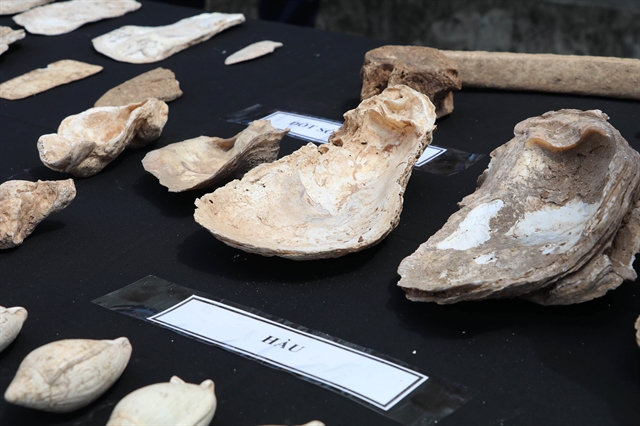 |
| The excavation reveals a diverse array of artefacts in both types and quantities. VNA/VNS Photo Thùy Dung |
Highlighting the value of Bồ Bát pottery provides a solid opportunity for the province to restore and develop its ancient ceramic craft, linking it to cultural tourism and tradition. Bồ Bát pottery is currently made into souvenir products that meet the growing demands of domestic and international tourists.
With a strong commitment to sustainably harnessing the value of the Bồ Bát pottery village, Ninh Bình is prioritising policies and support for the development of this craft.
Efforts include effectively implementing projects to restore and promote the heritage of Mán Bạc and ancient Bồ Bát pottery, planning the preservation of historical sites and promoting the craft village in connection with other cultural heritage destinations in the province to attract more visitors.
From excavation to inspiration
“After six excavations, the Mán Bạc archaeological site has provided a wealth of scientific information about prehistoric inhabitants in the coastal region,” said Nguyễn Cao Tấn, deputy director of the Provincial Department of Tourism.
“This represents an important resource that can be effectively integrated with other archaeological sites in the province, particularly the World Cultural and Natural Heritage Site of Tràng An,” he said.
“By doing so, a unique space can be created for tourism products that explore the distant past of prehistoric peoples, their stories of adaptation to the environment and the cultural narratives of ancient inhabitants. This will serve as a new direction and a fresh tourism product for Ninh Bình."
 |
| Archaeologists examine artefacts unearthed at Mán Bạc – tools, pottery and traces of habitation – providing valuable insights into the area's prehistoric population. VNA/VNS Photo Thùy Dung |
The province is working to submit a proposal to classify Mán Bạc as a national heritage site. Efforts are also underway to create a national treasure dossier for the Mán Bạc artefact collection.
This initiative aims to support the development of a sustainable cultural industry and tourism, helping to transform Ninh Bình into a developed industrial province while preserving its identity as a national heritage centre. VNS


